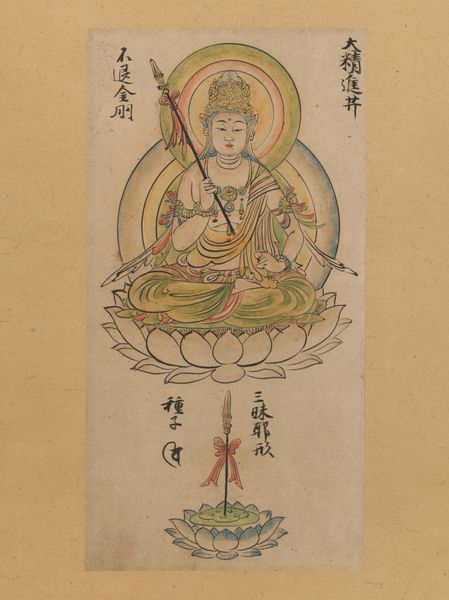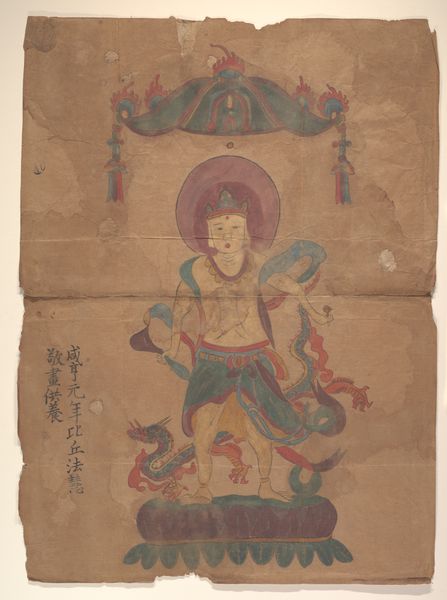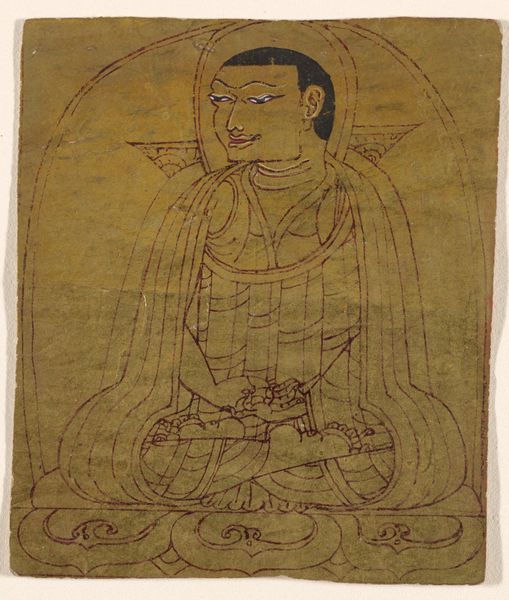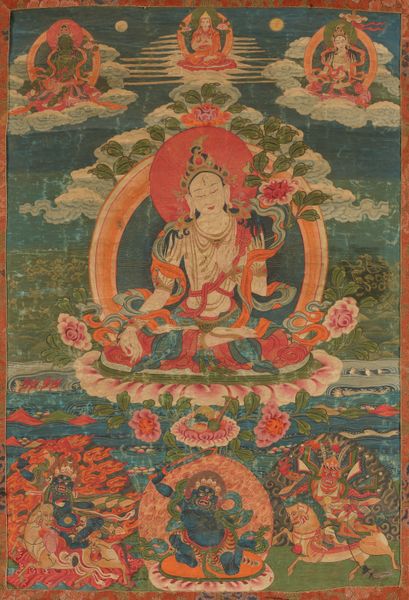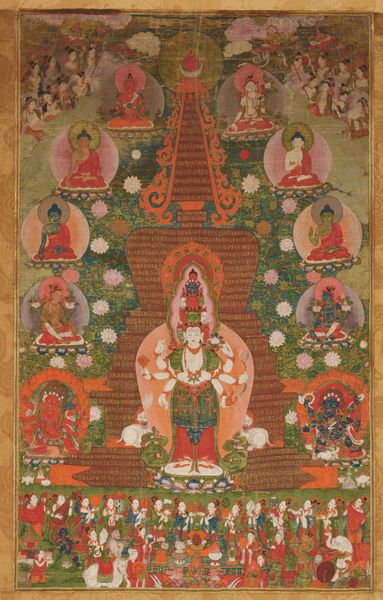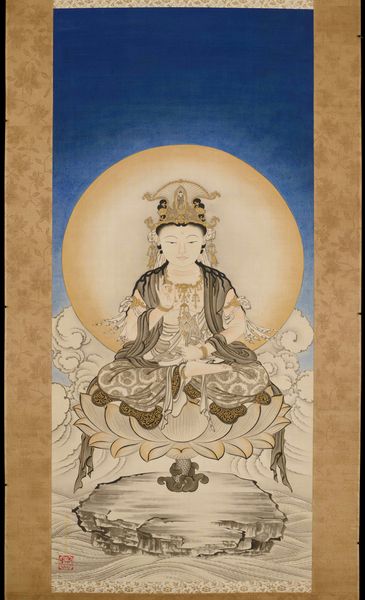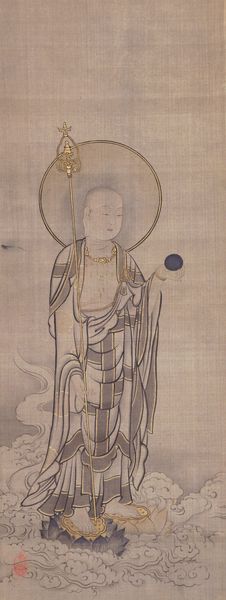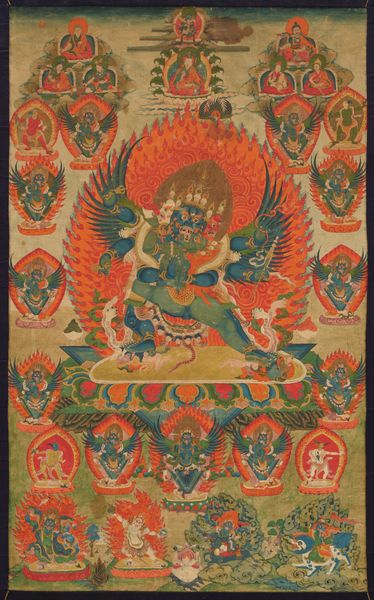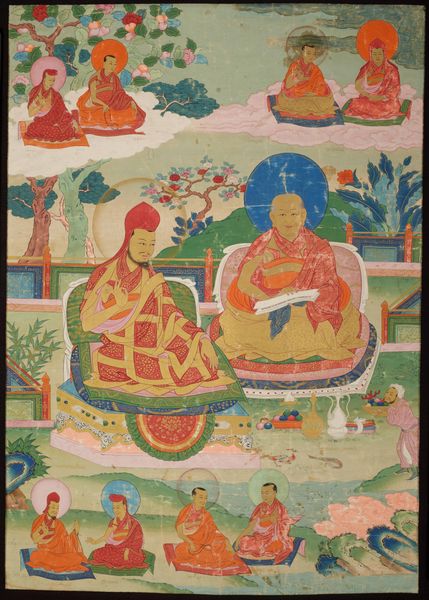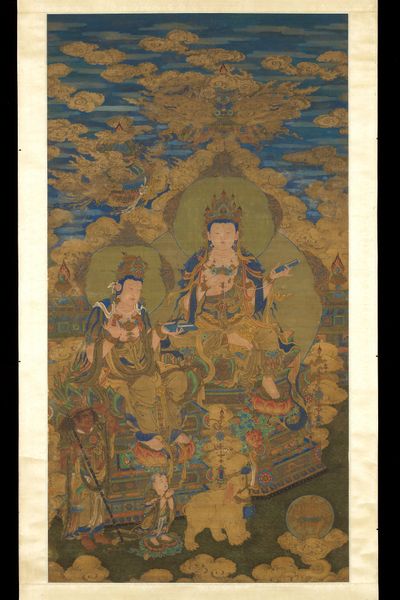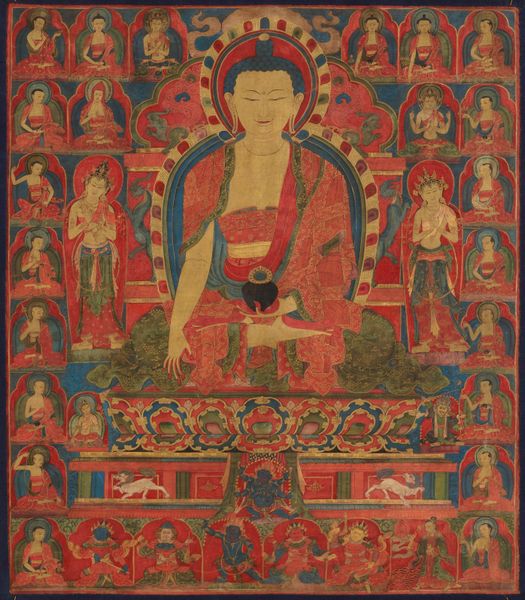
Gakkō Bosatsu, from “Album of Buddhist Deities from the Diamond World and Womb World Mandalas” (“Kontai butsugajō”) 1134 - 1166
0:00
0:00
drawing, tempera, watercolor, ink
#
drawing
#
byzantine-art
#
medieval
#
tempera
#
asian-art
#
figuration
#
watercolor
#
ink
#
orientalism
#
miniature
#
calligraphy
Dimensions: 10 × 5 3/8 in. (25.4 × 13.7 cm) Overall with mounting: 49 1/4 × 15 1/2 in. (125.1 × 39.4 cm) Overall with knobs: 49 1/4 × 17 3/4 in. (125.1 × 45.1 cm)
Copyright: Public Domain
Curator: Here we have "Gakkō Bosatsu, from ‘Album of Buddhist Deities from the Diamond World and Womb World Mandalas’", a watercolor, ink, and tempera drawing from between 1134 and 1166 by Takuma Tametō. Editor: Wow, it has this serene, almost weightless quality. The figure seems to float on the lotus flower, surrounded by those delicate halos, and all the fine calligraphy, of course. Curator: The subject, Gakkō Bosatsu, embodies the power of the moon. Note how he’s often depicted alongside Nikkō Bosatsu who represents the sun, and they frequently attend Bhaisajyaguru, the Medicine Buddha. Here he's presented almost as an attendant, a secondary lotus supporting the first and carrying a sort of symbolic offering—a crescent moon shape itself. Editor: It makes me consider the relationship between light and shadow, knowledge and mystery. The moon reflects the sun, doesn’t it? Offering borrowed light... that makes me think about marginalized voices amplifying other people's movements today. Who's in the moonlight versus who's being illuminated directly? Curator: That's an astute observation. You can read how medieval Japanese esoteric Buddhism connected lunar deities and wisdom traditions; enlightenment isn’t always direct or easy. And if you examine the elegant lines, especially in the robes, and the elaborate jewelry, it almost glows... You sense a sort of interior illumination as well, despite its miniature size. Editor: Indeed. The symmetry also speaks to this idea of balance, doesn’t it? This delicate balancing of contrasting energies. Curator: Exactly! Consider, though, what happens when these energies *aren’t* in equilibrium. This can reflect how larger structures of power impact individuals within society who might be experiencing various forms of oppression and marginalization. There's that constant seeking of balance. Editor: It becomes clear how crucial a historical framework can be, and it also shows, personally, the universality in searching for meaning, wholeness, whatever you might call it. Curator: It does inspire a sense of yearning, of that quest for interconnectedness and completeness—with a hint of moonlight, naturally.
Comments
No comments
Be the first to comment and join the conversation on the ultimate creative platform.
